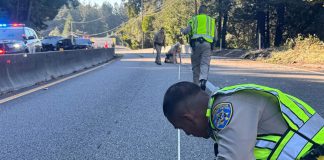Ever since California implemented Common Core standards for public education, there has been a change in the way information is presented to students.
As with all things, change brings about a learning curve on how to best implement the new program. The evolution in workbooks and overall curriculum only started to become noticeable to parents during the last school year.
Common Core standards, which began to take root in 2009, aim to better prepare students for real life by improving their comprehension of language arts and math.
Last week, California State Superintendent of Public Instruction Tom Torlakson announced an updated online publication to aid teachers in their transition to Common Core.
“California is leading the nation by developing an integrated ELA/ELD Framework and making it widely available. This will help improve literacy instruction, a critical element of preparing California students for college and careers in the 21st century,” Torlakson said.
According to Educational Therapist Cheryl Ruyle, Common Core is a necessary transition for students. And the change has even impacted her private practice in Scotts Valley.
“The hardest part about teaching to the new standards is getting parents to understand what the standards are all about,” she said. “It’s just a huge, mental shift for parents — we didn’t learn this way, and we don’t know why our kids have to.”
Part of the reason for the transition to Common Core is because today’s world exists in a digital age, where information is exchanged rapidly. The ways of the past no longer apply, and overall understanding of how things work together is now more crucial than ever.
In her years of teaching, Ruyle observed that the students focus on memorizing the information, rather than comprehending it fully. And Common Core’s goal is to improve comprehension.
“The process of reading a text, analyzing it, and taking notes for “The Great Gatsby” is at its core the same process of reading, analyzing, and taking notes for one’s science text book,” Ruyle said. “But students have trouble seeing the connection. They learn skills in isolation, and rarely learn to connect their content across subjects.”
The most recent online update Torlakson unveiled specifically focuses on the English Language Arts/English Language Development Framework for California Public Schools (ELA/ELD Framework), which was originally implemented by the State Board of Education in 2014.
The improvements, promised to be user-friendly, can be found online at www.cde.ca.gov/ci/rl/cf/elaeldfrmwrksbeadopted.asp.
And though the improved framework is aimed to assist all students, Ruyle said that not everyone learns in the same way. In her practice, Ruyle faces students with learning differences, who tend to have the most trouble with the higher thinking expected from Common Core.
“The difficulty of being a teacher is always having to find that middle ground, where you are targeting the “average” student and then differentiating for students who need more support and students who need more of a challenge,” she said.
To delve further into Common Core and learn how to teach it, visit the government’s www.digitalchalkboard.org. The website, targeted for teachers, is open to explore. Homeschool and alternative education families may also glean from this resource.
Be prepared to spend some time learning while there. From a quick look, Ruyle said she noticed it would take language arts teachers 27 hours of lessons to complete two ELA and Assessment modules. That learning time can become even longer for a teacher who works with non-native speakers.
“I don’t see a lot of teachers being able to devote that amount of time to working through the modules, unless they were given specific professional development days to do so,” said Ruyle. “The modules seem like a good idea in theory — there are online discussion boards where teachers can collaborate together on teaching to the new standards — but I question how often teachers will actually use this.”
For more information about the most current Common Core developments at California Department of Education (CDE), and Tom Torlakson, follow the organization at cde.ca.gov, Twitter, Facebook, and YouTube.
To learn about Ruyle, visit www.cherylruyle.com










